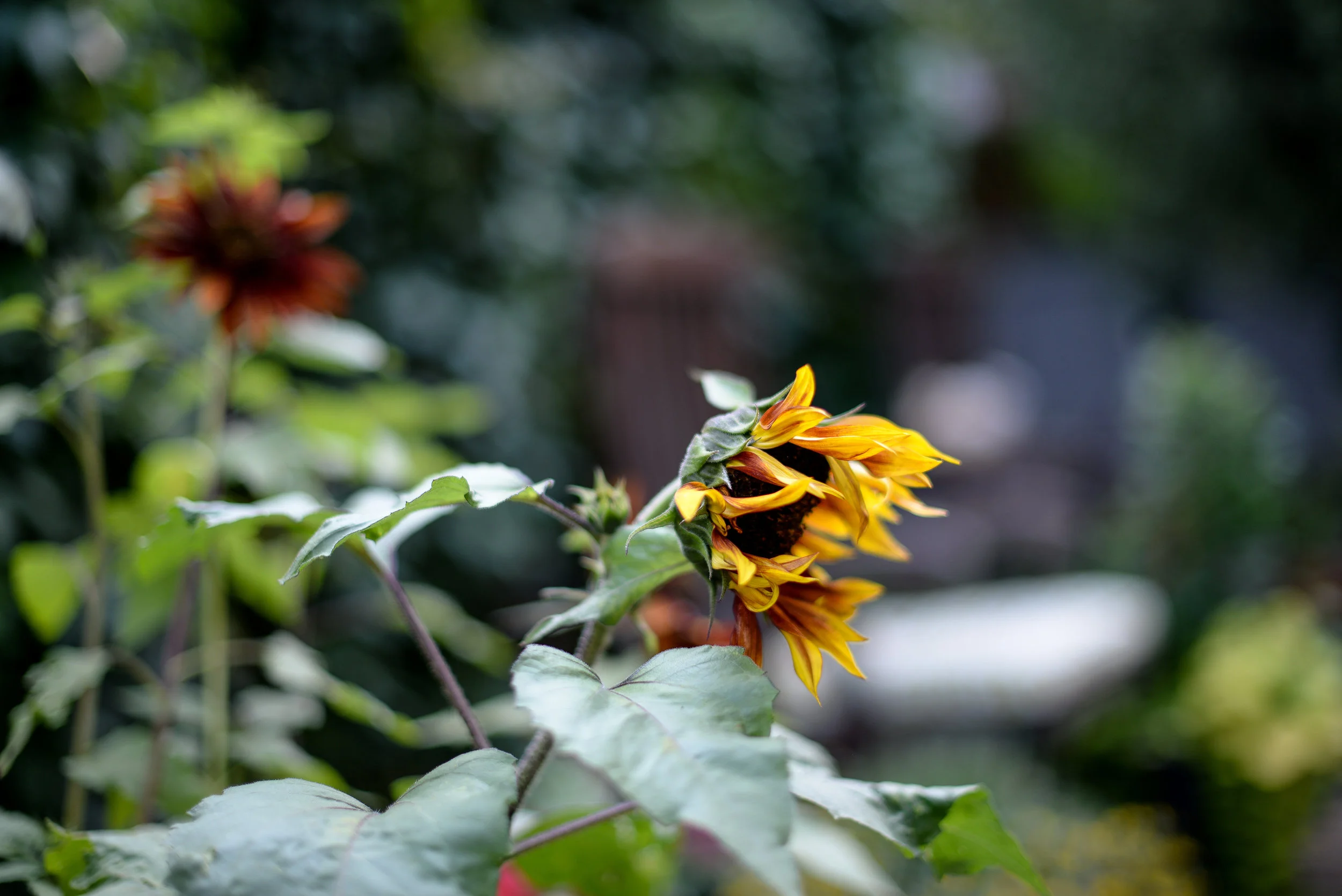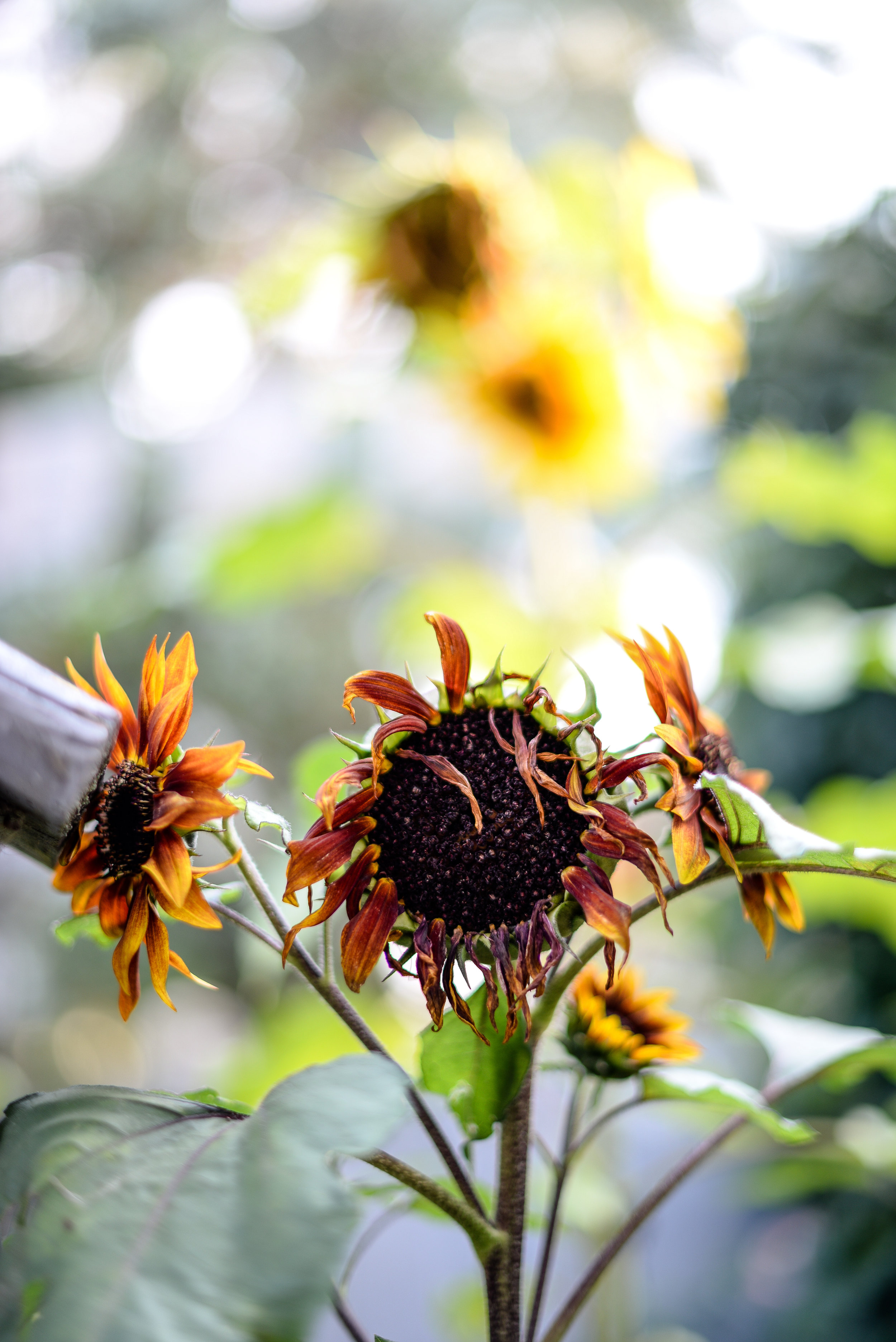Sunflowers and Us
Before writing this post I spent a lot of time in the internet rabbit hole looking at the haunting images of the German artist, Anselm Kiefer's sunflowers. I have the book which accompanied his 2006 exhibition, Heaven and Earth, and in the essay his sunflower images are said to be "a cosmic elaboration" on Van Gogh's sunflowers. There is a discussion about the belief of Robert Fludd (16th century mystic/philosopher) that "everything on earth has its equivalent star in heaven." In some of Kiefer's paintings, there are sunflower seeds embedded in the paint, "evoking distant stars, but they are black. Again we are reminded that the stars we really admire are actually remnants of planets that have long since burned out."
Artists and poets have long been looking at sunflowers, and the sunflowers have also been looking at us.
Consider Pessoa's image, the gaze of the sunflower:
from: The Keeper of Sheep
by Fernando Pessoa
My gaze is clear like a sunflower.
It is my custom to walk the roads
Looking right and left
And sometimes looking behind me,
And what I see at each moment
Is what I never saw before,
And I’m very good at noticing things.
I’m capable of feeling the same wonder
A newborn child would feel
If he noticed that he’d really and truly been born.
I feel at each moment that I’ve just been born
Into a completely new world…
I believe in the world as in a daisy,
Because I see it. But I don’t think about it,
Because to think is to not understand.
The world wasn’t made for us to think about it
(To think is to have eyes that aren’t well)
But to look at it and to be in agreement.
I have no philosophy, I have senses…
If I speak of Nature it’s not because I know what it is
But because I love it, and for that very reason,
Because those who love never know what they love
Or why they love, or what love is.
To love is eternal innocence,
And the only innocence is not to think…
{source}
Here are a couple of quotations from Allen Ginsberg's poem, "The Sunflower Sutra,"
and the gray Sunflower poised against the sunset, crackly bleak and dusty with the smut and smog and smoke of olden locomotives in its eye—
corolla of bleary spikes pushed down and broken like a battered crown, seeds fallen out of its face, soon-to-be-toothless mouth of sunny air, sunrays obliterated on its hairy head like a dried wire spiderweb,
leaves stuck out like arms out of the stem, gestures from the sawdust root, broke pieces of plaster fallen out of the black twigs, a dead fly in its ear,
Unholy battered old thing you were, my sunflower O my soul, I loved you then!
and
A perfect beauty of a sunflower! a perfect excellent lovely sunflower existence! a sweet natural eye to the new hip moon, woke up alive and excited grasping in the sunset shadow sunrise golden monthly breeze!
We might compare the "battered crown," the "toothless mouth" and the "lovely sunflower existence" with this poem by Liu Xia, which is translated from the Chinese by Jennifer Stern and Ming Di. One has difficulty of thinking of sunflowers without thinking of Van Gogh, and it's interesting to see how they're transformed or called upon in this poem. The translators describe the poet as "burning in extreme solitude but gaining a new artistic life."
Empty Chairs
Empty empty empty
so many empty chairs
everywhere. They look
charming in van Gogh’s paintings.
I quietly sit on them
and try to rock
but they don’t move —
they are frozen
by what’s breathing inside them.
Van Gogh waves his paintbrush —
leave leave leave
there’s no funeral tonight.
He looks straight through me,
and I sit down
in the flames of his sunflower
like a piece of clay to be fired.
From the translator's notes on Poetry Foundation:
"Empty Chairs" was written in August 1999 while Liu Xiaobo was serving a three-year imprisonment in a labor camp from October 1996 to October 1999. Liu Xia became used to the isolation and turned to art when describing the absence of her husband. “Empty empty empty / so many empty chairs” in her kitchen, bedroom, and in her parents’ dining room, where she used to go frequently with Liu Xiaobo. But in the poem the empty chairs were from van Gogh’s painting, colorful and charming. She was burning in extreme solitude but gaining a new artistic life.
Continue reading here.
Lastly, let's look at this poem by the Norwegian poet, Rolf Jacobsen.
Sunflower
by Rolf Jacobsen
trans. by Robert Bly
What sower walked over the earth,
which hands sowed
our inward seeds of fire?
They went out from his fists like rainbow curves
to frozen earth, young loam, hot sand,
they will sleep there
greedily, and drink up our lives
and explode it into pieces
for the sake of a sunflower you haven’t seen
or a thistle head or a chrysanthemum.
Let the young rain of tears come.
Let the calm hands of grief come.
It’s not all as evil as you think.
What strikes me upon compiling these images and poems is the examination of innocence and evil in the context of a flower we usually associate with happiness, sunshine. We see ourselves in sunflowers, we see humanity there, an abundant creative force. They see so much, they are battered and tattered, and yet contain multitudes. They rise up, tall, indisputable, full of the seeds of rebirth, always burning, always alone. We hope, we hope as Jacobsen says, it's not all as evil as we think.








